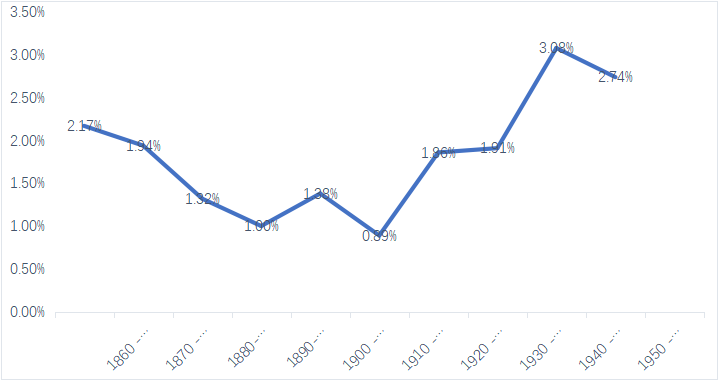

Volume 18
Published on December 2023Volume title: Proceedings of the 2nd International Conference on Interdisciplinary Humanities and Communication Studies
Perfectionism significantly contributes to the development of mental disorders. To implement timely intervention and prevention, it is necessary to further understand the causes of perfectionism. Although previous studies have identified certain causes of perfectionism, with the rapid development of modern society and the influence of significant events, there will be more potential causes in the future. Therefore, this paper aims to summarize and analyze the existing causes of perfectionism through a literature review, and also predict the factors that may become potential causes of perfectionism in the future. The main factors identified in this article involved in the cause of perfectionism are parenting style, personality and culture. On this basis, this paper suggests that in the future, due to the influence of technological advancements, the potential causes may include social media, artificial intelligence and remote education. In addition, given the prevalence of mask wearing in certain regions during the covid-19 pandemic and its impact on the post-pandemic era, masks should also be taken into account when discussing potential causes of perfectionism in the future.

 View pdf
View pdf


This paper explores the use of traditional and new media by Non-Governmental Organizations (NGOs) for effective communication. It argues that NGOs should leverage different media forms based on specific circumstances. The paper discusses Farm Radio International’s use of radio and mobile phones to engage farmers in dialogue, empowering them to voice their concerns. It also highlights the #blogladesh campaign, where mommy bloggers were utilized to raise awareness of women’s and children’s health issues. By using traditional media, NGOs can reach a wider audience, particularly in marginalized communities. New media, on the other hand, offers personalized and interactive communication. Understanding the strengths and limitations of each media form enables NGOs to effectively convey their messages, enhance communication effectiveness, and achieve their mission and goals.

 View pdf
View pdf


Some have underrated Film Noir due to some misconception that it is solely limited to black-and-white imagery. However, it encompasses much more than that. It supports an aesthetic and serves as a foundational pillar for crime cinema. This paper will use formal techniques such as diegesis, montage, mise-en-scène, camera angle, and camera movement to analyze two scenes from crime cinema. One example is The Naked City, a quintessential Film Noir that employs chiaroscuro lighting to accentuate the criminal narrative. Another illustrative instance is The Taking of Pelham One Two Three. The argument surrounding Film Noir and crime cinema reveals different depictions of geographical space, yet they share similarities in their representations of themes, including war trauma, masculinity, and class. The Naked City employs a straightforward approach to represent its unique landscape, effectively connecting external and internal spaces. The Taking of Pelham One Two Three uses transportation and currency symbols to establish distinct space connections. Both films, produced in the post-war era, allow for allegorical exploration of auteurs’ imagination and re-imagination through cinematic elements. These elements ambiguously craft narratives that intricately blend aesthetics and ideology. In this case, the transition of Film Noir into the realm of crime cinema influences the development of modern cinema.

 View pdf
View pdf


Sylvia Plath’s Ariel, characterized by dark themes, idiosyncratic imagery, and raw emotional intensity, holds an enduring fascination for readers and critics alike. While much scholarship has examined this collection through a psychoanalytic or biographical lens, this research seeks to uncover an underexplored dimension of Ariel — its ecofeminist undertones. The abundant nature imagery provides a particularly rich source for the investigation of her pre-ecofeminist consciousness. This research adopts a mixed-methods design that combines a corpus-based approach with an in-depth analysis of representative imagery. Excel-based calculation results show that the relatively large presence of nature imagery infuses Ariel with a riveting, dreamy atmosphere. The textual analysis further reveals that Plath’s subtle interweaving of the female experience and the natural world resonates with ecofeminist notions of patriarchal oppression and mutual liberation. By unearthing the ecofeminist dimensions of Ariel, this research aims to provide fresh insights into this masterpiece while shedding light on the richness and complexity of Plath’s thematic concerns and poetic expression.

 View pdf
View pdf



This paper explores the innovative design and cultural heritage of traditional costumes of the Aoluguya Ewenki ethnic group in the digital age. Through digital techniques, traditional costumes have been infused with modern elements, enhancing the intricacy and diversity of their designs, thus introducing new means of design for traditional attire. Traditional costume patterns and totems are reinterpreted and created through digital software, allowing characters to wear them in virtual film and television, resulting in unique visual effects. 3D modeling technology showcases costume details in virtual film and television, and virtual fitting experiences enable the audience to immerse themselves in historical culture. Balancing modern creativity with cultural authenticity is crucial to achieving innovation and inheritance, ensuring that digital art plays a significant role in the application of traditional costumes of the Aoluguya Ewenki ethnic group.

 View pdf
View pdf


Language is not merely a tool for communication; it is intricately intertwined with thinking and culture, perpetually evolving under their profound influence. Linguists widely acknowledge that language acts as a reflection of people’s worldview, unveiling diverse modes of thinking, cultural values, and perspectives. The objective of this paper is to delve into the disparities between the English and Chinese languages, shedding light on how these linguistic characteristics engender four fundamental thinking distinctions: imaginal thinking versus logical thinking, linear thinking versus curved thinking, holistic thinking versus individual thinking, and subjective thinking versus objective thinking. By exploring these disparities, a deeper understanding of the intricate relationship between language and cognition can be gained. This exploration helps to comprehend how language not only shapes perception of the world but also influences thought processes and cultural perspectives. This research contributes to the broader field of linguistics and provides valuable insights into cross-cultural communication and understanding.

 View pdf
View pdf


Shakespeare was a famous playwright and poet during the English Renaissance. His sonnets had a profound impact on world poetry. In the sonnets, he uses different images to express his inner emotions, and China also has extraordinary achievements in the sonnets. The ancient Chinese poets were good at using different intentions to express their feelings. Therefore, this paper focuses on the differences between Shakespeare’s sonnets and the imagery in Chinese poetry. The choice of images in Shakespeare’s sonnets and ancient Chinese poetry is closely related to the background of The Times. Shakespeare’s choice of images focuses more on seasonal animals, while the images in ancient Chinese poetry are more inclined to choose plants and the moon, and the expressions of emotions in ancient Chinese poetry are consistent.

 View pdf
View pdf


In the situation of gradual globalization, communication and interaction between various languages and conventions have become more frequent. The reflection of the difference between Chinese and Western thinking in linguistic and cultural diversity has become more apparent and essential. By doing this, people can have a further comprehension of the values, cognitive styles, and social habits behind different cultures and languages. In recent research, it has been shown that there are differences in language expression between China and the West, as well as differences in personal values and time. The author would like to research the differences between Chinese and Western ways of thinking in language, the differences in social etiquette and ways of interacting with the different values and cognitive styles. The purpose of the research is to assist people better cope with the challenges of cultural conflicts and exchanges and to foster mutual cooperation among different cultures. The research method used in this paper is the literature review, and the significance of the research is that it not only can help people better cope with and conform to this difference in thinking between China and the West, but it also improves the international communication capacity of future students.

 View pdf
View pdf



Traditional Chinese Medicine (TCM) has played a significant role in the lives of the Chinese people and is gradually entering the global arena. The process of its globalization can be mirrored by the mass media, such as newspapers, due to their capacity of reflecting the changes in the culture and ideology of a certain region. This study explored the changing trends in America Media Discourse on TCM from 1860 to 1959 in the aspects of vocabulary, readability, and content, based on the analysis of a self-built corpus. The findings reveal that over a century, American media reports on TCM have been picking words that are relatively simple and close to daily life, with a low content of academic vocabulary; scored high for the Flesch Reading Ease Readability formula, decreasing the difficulty of being understood by readers; ranged from shallow to deep in the overall perspective, reflecting the historical process of TCM’s transmission and development in global terms.

 View pdf
View pdf


Interstellar is a science fiction film by British director Christopher Nolan. In 2014 Nolan directed the science fiction movie. The movie gives full play to the role of metaphor in movie creation, using verbal symbols such as lines, words and non-verbal symbols such as images and sounds as carriers, and jointly participating in multimodal metaphor construction. Through multimodal metaphors, the film deepens the theme, sublimates the aesthetic experience, highlights the artistic value of the film, and arouses the audience’s thinking and emotional resonance. The use of multimodal metaphors also brings a strong sense of humanity to this science fiction movie. Taking the multimodal metaphor in the film as a starting point, the article analyzes the multimodal metaphor of Interstellar from the perspective the literature review of multimodal metaphor, and the use of multimodal metaphor in Interstellar to reveal its functions.

 View pdf
View pdf




